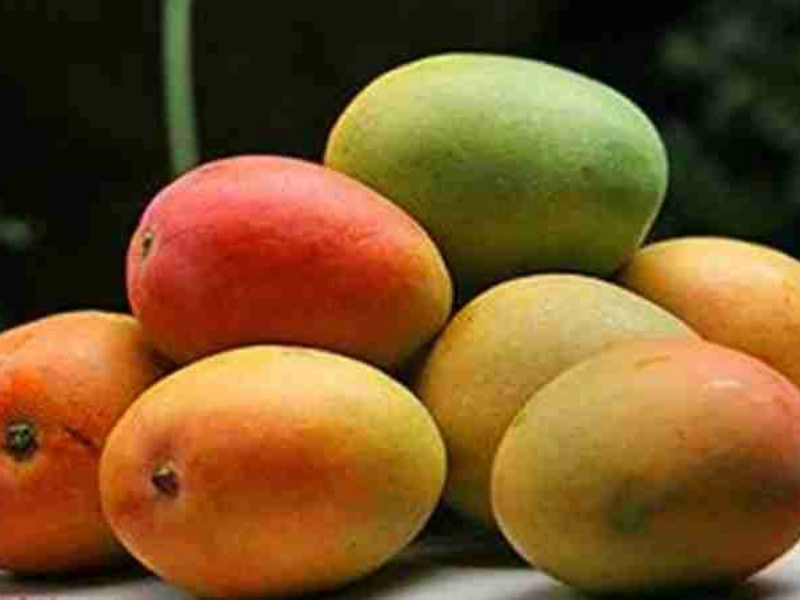Popular tropical fruits with great sweet, juicy flesh and vivid flavor are mangoes. For some people, though, loving this delicious fruit might cause allergic responses. Although somewhat rare, mango allergy can cause discomfort and possibly major medical problems for individuals affected. Anyone who might be sensitive to mango ought to understand their symptoms and investigate appropriate substitutes. This page explores the symptoms of mango allergy and provides substitutes to guarantee a safe, great diet.

 Mangos allergies can cause somewhat different symptoms in different people. Skin irritation is one of the most often occurring reactions; it may show up as redness, itching, or hives following mango skin or flesh contact. This is often brought on by urushiol, a chemical also present in poison ivy that can induce comparable allergic reactions.
Among gastrointestinal complaints could include nausea, vomiting, and stomach cramps. Usually starting soon after eating mango, these symptoms can be rather upsetting. More severely, anaphylaxis—a potentially fatal allergic reaction—may strike. Difficulty breathing, neck swelling, fast pulse, and reduction in blood pressure define anaphylaxis. If treated quickly with an epinephrine shot, this disorder—which calls for emergency medical attention—can be life-saving.
See a healthcare professional for correct diagnosis and treatment if you believe you have a mango allergy. To rule out other possible sensitivity and confirm the allergy, allergy testing could be advised.
Mangos allergies can cause somewhat different symptoms in different people. Skin irritation is one of the most often occurring reactions; it may show up as redness, itching, or hives following mango skin or flesh contact. This is often brought on by urushiol, a chemical also present in poison ivy that can induce comparable allergic reactions.
Among gastrointestinal complaints could include nausea, vomiting, and stomach cramps. Usually starting soon after eating mango, these symptoms can be rather upsetting. More severely, anaphylaxis—a potentially fatal allergic reaction—may strike. Difficulty breathing, neck swelling, fast pulse, and reduction in blood pressure define anaphylaxis. If treated quickly with an epinephrine shot, this disorder—which calls for emergency medical attention—can be life-saving.
See a healthcare professional for correct diagnosis and treatment if you believe you have a mango allergy. To rule out other possible sensitivity and confirm the allergy, allergy testing could be advised.
 Usually requiring a comprehensive medical history and a physical examination, diagnosing a mango allergy A healthcare provider will probe your symptoms, their beginning, and any past allergic reactions. Sometimes they could advise allergy testing, either blood tests to measure particular IgE antibodies linked to mango proteins or skin prick tests.
In skin prick testing, a tiny bit of mango extract is applied to the skin then pricked to let the extract penetrate. Should a reaction take place—such as redness or swelling—it can point to an allergy. Conversely, blood tests track certain antibodies in the immune system's response to mango proteins.
Once a mango allergy is verified, your doctor can assist in creating a management schedule. This can involve avoiding mango and related items, carrying an epinephrine auto-injector for emergencies, and learning about cross-reaction with other fruits.
Usually requiring a comprehensive medical history and a physical examination, diagnosing a mango allergy A healthcare provider will probe your symptoms, their beginning, and any past allergic reactions. Sometimes they could advise allergy testing, either blood tests to measure particular IgE antibodies linked to mango proteins or skin prick tests.
In skin prick testing, a tiny bit of mango extract is applied to the skin then pricked to let the extract penetrate. Should a reaction take place—such as redness or swelling—it can point to an allergy. Conversely, blood tests track certain antibodies in the immune system's response to mango proteins.
Once a mango allergy is verified, your doctor can assist in creating a management schedule. This can involve avoiding mango and related items, carrying an epinephrine auto-injector for emergencies, and learning about cross-reaction with other fruits.
 Managing a mango allergy mostly means avoiding the fruit and any items containing mango or its variants. This covers fresh mango, mango juice, dried mango snacks, and goods bearing mango taste. Since mango can be found in sauces, dressings, and sweets, it is also imperative to closely examine food labels.
Apart from avoiding mango, those having this allergy should also be mindful of possible cross-reaction with other fruits. Other fruits in the Anacardiaceae family, including cashews and pistachios, as well as fruits like kiwi and papaya, some mango allergies may also react to other foods. See an allergist to for insightful advice on controlling cross-reactivity and keeping a safe diet.
In the event of unintentional contact, an emergency action plan is absolutely vital. This strategy should call for knowing when to use an epinephrine auto-injector, identifying allergic response symptoms, and getting medical assistance. Additionally helping to establish a safer environment is teaching friends, relatives, and colleagues about your allergy.
Managing a mango allergy mostly means avoiding the fruit and any items containing mango or its variants. This covers fresh mango, mango juice, dried mango snacks, and goods bearing mango taste. Since mango can be found in sauces, dressings, and sweets, it is also imperative to closely examine food labels.
Apart from avoiding mango, those having this allergy should also be mindful of possible cross-reaction with other fruits. Other fruits in the Anacardiaceae family, including cashews and pistachios, as well as fruits like kiwi and papaya, some mango allergies may also react to other foods. See an allergist to for insightful advice on controlling cross-reactivity and keeping a safe diet.
In the event of unintentional contact, an emergency action plan is absolutely vital. This strategy should call for knowing when to use an epinephrine auto-injector, identifying allergic response symptoms, and getting medical assistance. Additionally helping to establish a safer environment is teaching friends, relatives, and colleagues about your allergy.
Fortunately, there are lots of mouthwatering substitutes for mango that will satisfy your taste for tropical flavors. Without running the danger of an allergic reaction, fruits including papaya, pineapple, and peaches can offer a comparable sweetener and juiciness. One can consume these fruits raw, mixed into smoothies, or included to fruit salads. If you prefer mango-flavored goods, think about substituting fruit extracts or purees from safe choices. For desserts and beverages, for example, adding passion fruit or apricot puree will give them a tropical flair without running the danger of aggravating an allergy. Furthermore, many recipes calling for mango can be changed with these fruits, therefore enabling you to safely enjoy your preferred foods. Regarding snacks, seek for fruit bars or dried fruits free of mango. Many companies provide a range of free from allergies tropical-flavored snacks that are easy to find enjoyable choices. Managing a mango allergy can be fun if one explores new fruits and flavors while still savoring great pleasures.
Although having a mango allergy can appear difficult, it is quite controllable with correct knowledge and preparation. Maintaining a safe lifestyle mostly depends on you learning about the allergy, knowing its symptoms, and how to avoid triggers. Engaging with support groups or internet communities where people exchange food allergy management strategies and experiences helps as well. To guarantee your safety, let hosts or restaurant personnel know about your allergy when dining out or at social occasions. Many eateries are flexible and can change dishes to cut out mango or offer other choices. In case of inadvertent exposure, carrying an epinephrine auto-injector and donning a medical alert bracelet might also give piece of mind. In essence, even although mango allergy can provide difficulties, knowing its symptoms and looking at appropriate substitutes will enable people to enjoy a varied and satisfying diet. Those with a mango allergy can safely and boldly negotiate their food options by keeping aware and ready.